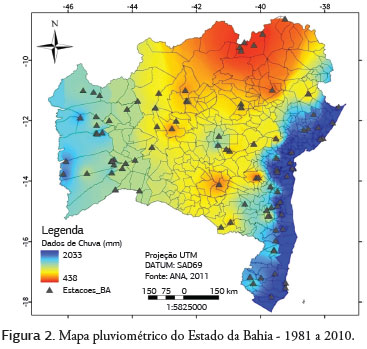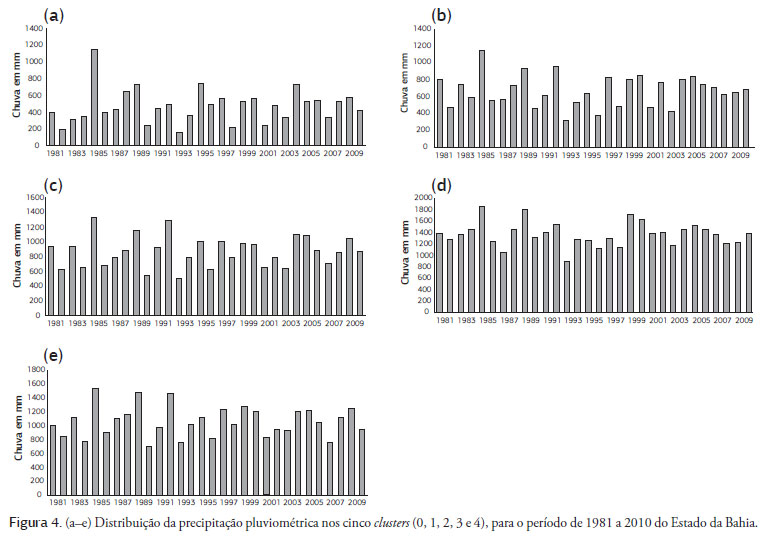The aim of this study was to identify rainfall homogeneous areas in the State of Bahia, Brazil and analyze the climatic conditions of each area for the period between 1981 and 2010. It was applied a data mining technique, clustering (grouping of data), by using the k-means algorithm for transforming time series of precipitation in five rainfall homogeneous areas, in response to topography, maritime dimension, and weather systems operating in the region of study. Data of average monthly rainfall of 92 meteorological stations were used. The results indicate that the driest areas are situated in the central part of the state, from north to south, mainly in the north with the lowest annual volumes, around 480 mm. The area located in the north of the state contrasts with that one located on the coast, where the largest volumes of annual rainfall of the study were observed (approximately 1.380 mm). The high rainfall variability occurs in almost all areas, especially in two of those of semiarid ones with Coefficients of Variation (CV) reaching 42 and 28%. This characteristic differs from the area belonging to the coastal area, which presents regular rainfall during all the year and a CV of 15%. The rainy and dry seasons are well defined. Precipitation values of the rainy season accounts for about 81% of the annual total, with emphasis on the zones located in the central-west and west of the state with 95 and 96% of the annual total.
data mining; clustering; rainfall variability









